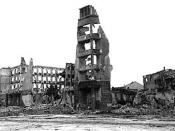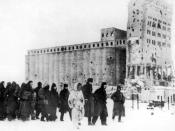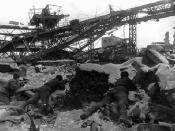Can feature films such as Stalingrad and Enemy at the Gates, be used to illustrate the past, or is it more dangerous than useful?
'Like drama and feature films, movies inspire and entertain. They often teach important truths about the human condition. They do not provide a substitute for history that has been painstakingly assembled from the best available evidence and analysis.'
The Battle of Stalingrad- August 1942 - February 1943
The battle of Stalingrad was one of the most vicious and bloody battles in the history of World War II. Joseph Stalin was determined to hold the city at any cost, and Adolph Hitler was just as determined to seize it. In a six month long battle that saw the entire city reduce to rubble, it is estimated that over five hundred thousand Soviet soldiers and civilians perished. The Sixth Army eventually seized the city but was itself surrounded by the Russians in a winter offensive.
After months of bitter fighting in the most horrendous conditions, ninety-one thousand Germans surrendered in what came to be a decisive turning point in World War II. By 1956, [thirteen years after Stalingrad] only five thousand German prisoners survived and returned to Germany. This essay will look at two films depicting the horror of Stalingrad's battlefield. It will establish if they portray the past effectively or prove dangerous in their historical accounts. The two films are similar yet distinctly different. Both films cover the Battle of Stalingrad, one from a Russian perspective Enemy at the Gates; and the other from a German perspective Stalingrad. Each is unique in the sense that neither film would have been made before the end of the Cold War. Good factual war movies are hard to find. Good factual war movies from any other perspective other...


